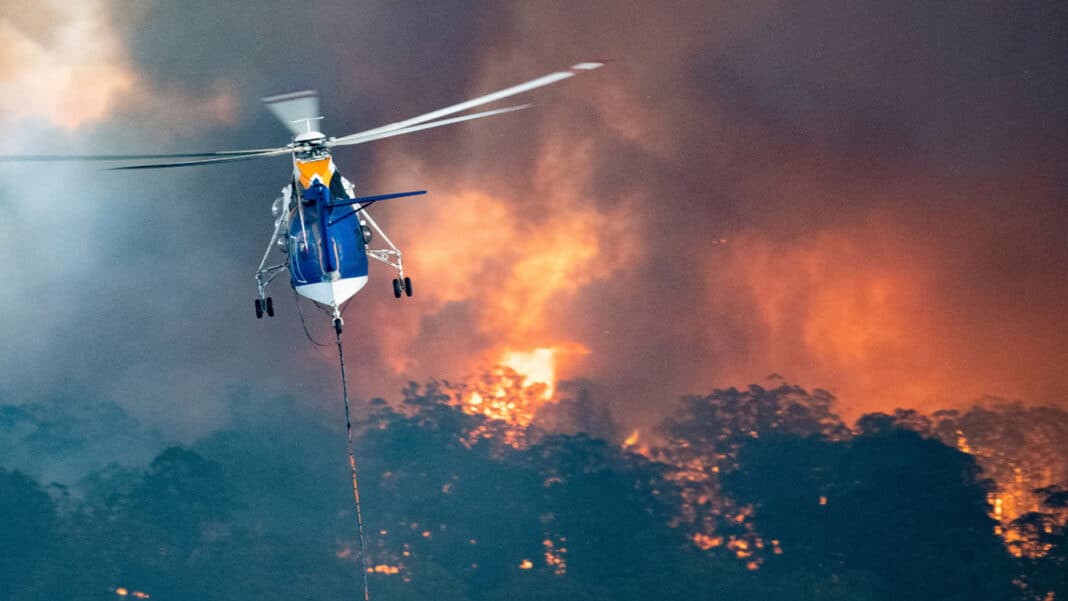Essential Tips for Bushfire Management to Guarantee Fire Defense

Recognizing Bushfire Danger Degrees
Understanding the varying degrees of bushfire danger is necessary for effective planning and preparation in mitigating potential risks to buildings and lives. Bushfire risk levels are usually classified based on aspects such as weather condition problems, fuel accessibility, topography, and historic fire behavior. By comprehending these risk people, communities and levels can proactively execute strategies to lower susceptability and enhance resilience despite possible bushfire events.
The very first degree of bushfire danger is low danger, where the possibility of a bushfire taking place and causing significant damage is marginal. High-risk degrees represent a considerable risk, with conditions helpful to fast fire spread and extreme fire behavior.
Understanding these bushfire danger levels enables stakeholders to customize their preparedness and action actions appropriately, making sure a positive and reliable method to bushfire administration.
Establishing a Defensible Room
Efficient bushfire management starts with establishing a defensible space around homes to improve security against possible fire hazards. A defensible room is a barrier area that produces an obstacle between a structure and the surrounding flammable plants. This space functions as a vital line of defense, offering firefighters a risk-free location to operate and helping to lower the threat of a fire spreading to the home.
When developing a defensible room, it is important to consider the format of the residential or commercial property and the surrounding landscape. Clearing plants, specifically highly flammable plants, within a certain radius of the property can assist protect against the rapid spread of fires. Additionally, preserving a well-irrigated zone around the property can additionally boost its defensibility.
Routine upkeep of the defensible area is vital to guarantee its efficiency. This includes cutting overhanging branches, removing dead plant life, and maintaining the area cost-free of particles. By spending time and effort right into developing and keeping a defensible area, homeowner can considerably enhance their chances of shielding their homes and assets during a bushfire.
Executing Fire-Resistant Landscape Design
When developing landscapes to alleviate the risk of bushfires, including fireproof elements is vital for improving building defense and minimizing fire dangers. Implementing fire-resistant landscape design includes critical preparation to create a defensible room around frameworks. Start by picking fire-resistant plant types that are less likely to ignite and produce lower degrees of flammable products. Select plants read with high dampness material, low oil material, and very little dead plants to lower the danger of fire spread. Additionally, preserve adequate spacing in between plants and keep them properly pruned to stop fire from easily jumping between plant life.

Producing an Emergency Situation Emptying Plan
Establishing a comprehensive emergency evacuation plan is essential for making certain the security and wellness of people during prospective bushfire cases (BAL Report). A reliable discharge plan must detail clear treatments to follow in case of a bushfire risk, consisting of assigned evacuation courses, setting up factors, and communication procedures
To start producing an emergency evacuation plan, it is vital to analyze the details dangers and vulnerabilities of your area. Recognize several emptying routes that cause safe locations far from the fire, thinking about factors such as terrain, road availability, and potential dangers. Establish communication networks to alert locals of an upcoming evacuation, using methods such as sirens, text alerts, or door-to-door alerts.
Consistently testimonial and practice the evacuation plan with all citizens or neighborhood participants to make sure everybody understands their roles and responsibilities. Conduct drills to evaluate the efficiency of the plan and make any essential changes. By having a well-prepared discharge plan in position, you can improve the opportunities of a safe and organized discharge during a bushfire emergency situation.
Keeping Fire Safety Equipment
After establishing a detailed emergency emptying prepare for bushfire incidents, it is imperative to focus on the normal maintenance of fire safety tools to guarantee ideal performance and readiness. Normal maintenance of fire safety and security tools such as fire extinguishers, smoke alarm, emergency alarm, and lawn sprinkler is important in safeguarding lives and building throughout a bushfire. When needed., carrying out regular assessments, screening, and maintenance of these devices by qualified professionals is essential to assure they are in working order.
Fire extinguishers need to be checked on a regular basis for stress this article levels, visible damages, and proper performance. By diligently keeping fire safety and security tools, people these details can boost their readiness and action capabilities in the occasion of a bushfire.
Verdict
Finally, efficient bushfire monitoring involves understanding risk degrees, creating defensible areas, carrying out fireproof landscaping, developing emptying strategies, and maintaining fire safety and security tools. By complying with these vital tips, individuals can guarantee better fire protection and safety and security for their communities and residential properties. It is essential to focus on proactive actions to minimize the dangers linked with bushfires and to be planned for emergency situations.
By understanding the nuances of bushfire threat levels, developing defensible spaces, implementing fire-resistant landscaping, creating comprehensive emptying strategies, and making certain the upkeep of fire safety tools, neighborhoods and people can dramatically boost their durability versus the ravages of wildfires - BAL Assessment. These pointers are not only vital for protecting versus prompt fire risks but additionally for cultivating long-lasting fire security strategies that can make a substantial difference in the face of intensifying bushfire threats
High-risk degrees indicate a considerable threat, with problems conducive to quick fire spread and severe fire actions. Normal maintenance of fire safety tools such as fire extinguishers, smoke detectors, fire alarms, and sprinkler systems is essential in safeguarding lives and property throughout a bushfire.In verdict, effective bushfire monitoring entails understanding danger degrees, developing defensible spaces, executing fireproof landscaping, establishing emptying plans, and maintaining fire security equipment.